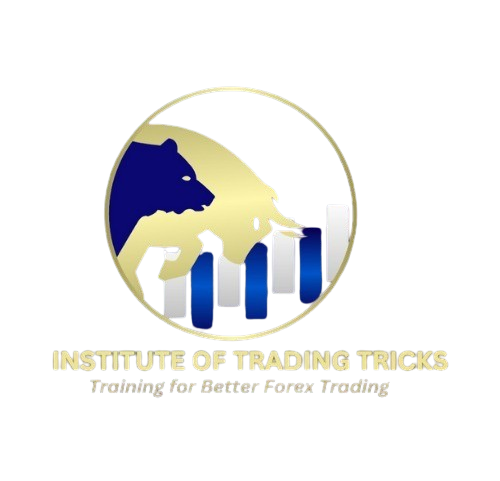Learn forex trading and its essentials with this comprehensive guide. Explore currency pairs, market analysis, trading strategies, risk management, and tools to build your path to success in the forex market.
What is Forex?
Forex, short for foreign exchange, is the global marketplace for buying and selling currencies. It is the largest and most liquid financial market in the world, with a daily trading volume exceeding $6 trillion. Unlike stock markets, forex operates 24 hours a day due to its decentralized nature and the involvement of traders across different time zones. The market enables currency conversions for international trade and investment while providing opportunities for traders to profit from currency value fluctuations.
History of Forex Markets
The forex market traces its origins back to ancient times when merchants exchanged coins from different civilizations. However, the modern forex market began to take shape in the 1970s when countries transitioned to floating exchange rates from the Bretton Woods system. This shift allowed currency values to fluctuate based on market forces rather than being fixed to the value of gold or other benchmarks. Over the decades, advancements in technology and globalization have transformed forex trading into a highly accessible and efficient market.
Importance in the Global Economy
Forex plays a vital role in facilitating international trade, investment, and economic stability. Businesses use it to hedge against currency risk, governments use it to manage reserves, and investors trade it to speculate on price movements. Its significance extends to providing liquidity to the financial system and enabling economic globalization.

How Learn Forex Trading
Currency Pairs
Currencies in forex are traded in pairs, such as EUR/USD or GBP/JPY. The first currency in a pair is the base currency, and the second is the quote currency. The exchange rate represents how much of the quote currency is required to buy one unit of the base currency.
- Major Pairs: Include the most traded currencies, such as EUR/USD and USD/JPY.
- Minor Pairs: Do not include the U.S. dollar but involve other significant currencies like EUR/GBP.
- Exotic Pairs: Involve a major currency paired with a less commonly traded one, such as USD/TRY.
Bid and Ask Prices
The bid price is the highest price a buyer is willing to pay for a currency, while the ask price is the lowest price a seller will accept. The difference between the two, known as the spread, represents transaction costs and varies across brokers and market conditions.
Benefits and Risks of Forex Trading
Forex offers several benefits:
- High Liquidity: The vast volume of trades ensures easy entry and exit positions.
- Accessibility: The market is open 24/5, allowing traders to participate at their convenience.
- Leverage: Forex brokers offer high leverage, enabling traders to control larger positions with smaller capital. However, the risks include significant losses, especially when over-leveraged, and the influence of unpredictable global events.
II. Key Concepts to Learn Forex Trading
Currency Pairs and Quotes
Each currency pair has a base and a quote currency. For example, in EUR/USD, EUR is the base currency, and USD is the quote currency. The price reflects the amount of the quote currency needed to purchase one unit of the base currency. Traders also use pips (price interest points) as a unit of measurement for changes in currency values, with a pip usually representing the fourth decimal place in currency quotes.
Market Participants
The forex market comprises diverse participants:
- Retail Traders: Individuals trading for profit or as a hobby.
- Central Banks: Manage national currencies and stabilize the economy.
- Institutional Investors: Large-scale players, such as hedge funds and investment banks, seeking returns or hedging exposures.
Market Timing and Sessions
Learn Forex trading operates across four major sessions: London, New York, Tokyo, and Sydney. Each session overlaps slightly, creating opportunities for higher volatility and volume. The London-New York overlap is particularly active, providing traders with some of the best opportunities.
Leverage and Margin
Leverage allows traders to amplify their exposure with borrowed funds, enabling significant returns from minor price movements. However, managing leverage is critical as it increases potential losses. Proper margin management ensures traders maintain sufficient account balance to prevent automatic liquidation.

III. Fundamental Analysis
Macroeconomic Indicators
Macroeconomic data like GDP, employment figures, and inflation significantly influence currency values. For instance, a strong GDP growth rate often strengthens a country’s currency due to increased investor confidence.
Central Bank Policies
Central banks use monetary policy tools, such as interest rate adjustments and quantitative easing, to control inflation and stabilize the economy. Their decisions can have a direct impact on currency strength, as higher interest rates typically attract foreign investments.
Geopolitical Events
Political stability, economic sanctions, and global events like natural disasters can drastically affect currency markets. Traders often monitor the news closely to anticipate potential market movements.
IV. Technical Analysis
Charts and Chart Types
Charts are essential tools for visualizing price movements. Common types include:
- Line Charts: Show simple price trends over time.
- Bar Charts: Display opening, closing, high, and low prices.
- Candlestick Charts: Offer detailed information, highlighting market sentiment.
Key Technical Indicators
Indicators like Moving Averages help smooth out price data to identify trends, while RSI and MACD assist in spotting overbought or oversold conditions. These tools are integral to developing trading strategies.
Support and Resistance Levels
Support levels act as price floors, while resistance levels function as ceilings. Identifying these points helps traders decide when to enter or exit trades.
Final Remarks
Learn Forex trading is an exciting and dynamic venture that offers immense opportunities for financial growth, but it requires a solid foundation of knowledge, discipline, and continuous learning. As a trader, understanding the fundamentals of the forex market, mastering technical and fundamental analysis, and implementing sound risk management strategies are crucial for long-term success.
While the promise of profit can be alluring, it’s essential to learn forex trading with realistic expectations and patience. Developing a comprehensive trading plan, practicing on demo accounts, and keeping a trading journal will help you refine your strategies and build confidence. Remember, the journey of a forex trader is not just about making money but about developing the skills and mindset necessary to navigate an ever-changing market.

Frequently Asked Questions
1. How to Learn forex trading?
Learn Forex trading, it is also known as foreign exchange trading, involves buying and selling currencies to profit from fluctuations in their exchange rates. It is the largest financial market in the world, with a daily trading volume exceeding $6 trillion.
2. How does forex trading work?
Learn Forex trading operates through currency pairs, where one currency is exchanged for another. Traders speculate on whether the base currency (first in the pair) will strengthen or weaken against the quote currency (second in the pair). Trades occur in a decentralized market open 24 hours a day.
3. What are the benefits of forex trading?
- High Liquidity: Easy to enter and exit trades.
- 24/5 Accessibility: Trade anytime during global market hours.
- Leverage Opportunities: Amplify trading potential with small capital.
- Diverse Strategies: Accommodates various trading styles like scalping, swing trading, or position trading.
4. What are the risks of forex trading?
To learn Forex trading carries risks such as:
- High leverage leading to significant losses.
- Market volatility due to economic and geopolitical factors.
- Lack of proper risk management causing capital depletion.
5. What are currency pairs, and how are they categorized?
Currency pairs consist of two currencies traded together, such as EUR/USD. They are categorized into:
- Major Pairs: Involve the U.S. dollar and are highly liquid (e.g., USD/JPY).
- Minor Pairs: Exclude the U.S. dollar but feature other major currencies (e.g., EUR/GBP).
- Exotic Pairs: Include one major currency and a less commonly traded currency (e.g., USD/TRY).
6. What is leverage, and how does it work in forex?
Leverage allows traders to control a larger position with a smaller amount of capital. For example, with 1:100 leverage, $1 can control $100 in the market. While leverage amplifies profits, it also increases the risk of losses.
7. What tools do I need to start forex trading?
To learn forex trading, you’ll need:
- A reliable trading platform (e.g., MetaTrader 4/5).
- A brokerage account.
- Access to market news and economic calendars.
- Charting tools for technical analysis.
- A demo account for practice.
8. How much money do I need to start trading forex?
The amount needed varies by broker and leverage offered. Some brokers allow you to start with as little as $50, but a larger capital is recommended to provide flexibility and manage risks effectively.
9. What is a pip in forex trading?
A pip (percentage in point) is the smallest price movement in a currency pair, typically 0.0001 for most pairs. It helps measure changes in value and calculate profits or losses.
10. How do I manage risk in forex trading?
Effective risk management involves:
- Setting stop-loss and take-profit orders.
- Using appropriate position sizes relative to your capital.
- Maintaining a favorable risk-reward ratio (e.g., 1:2).
- Avoiding emotional trading and over-leveraging.

